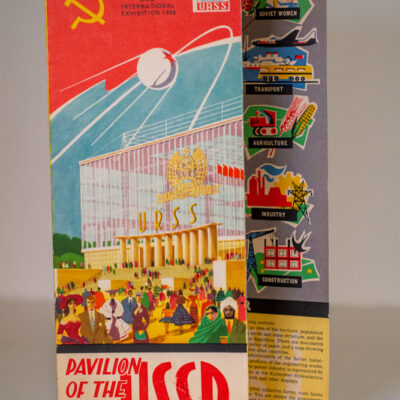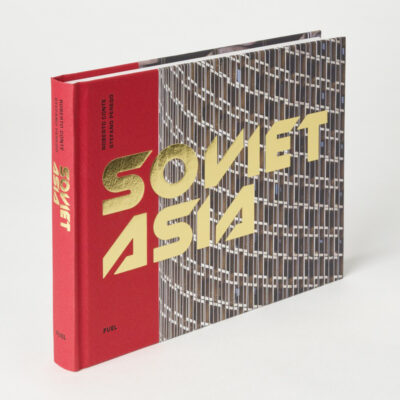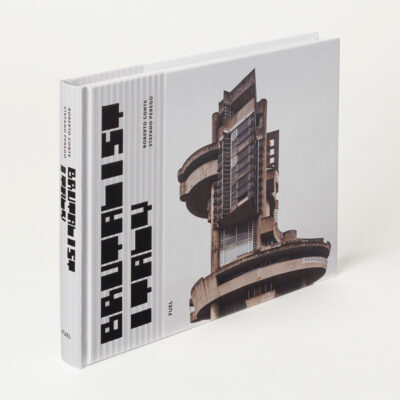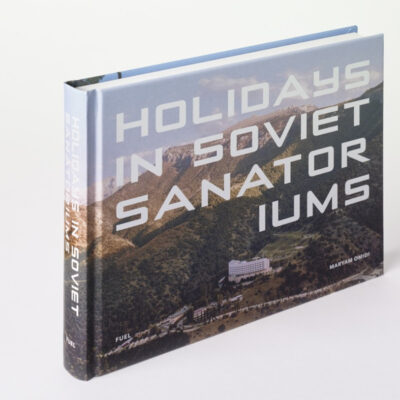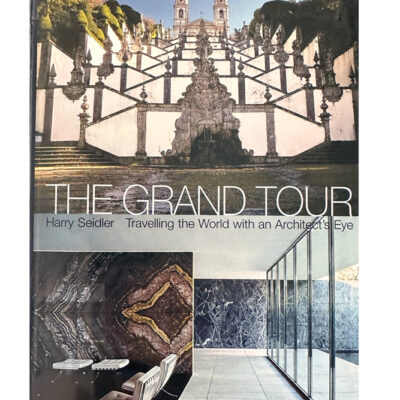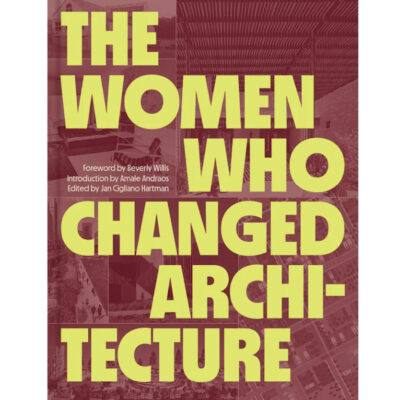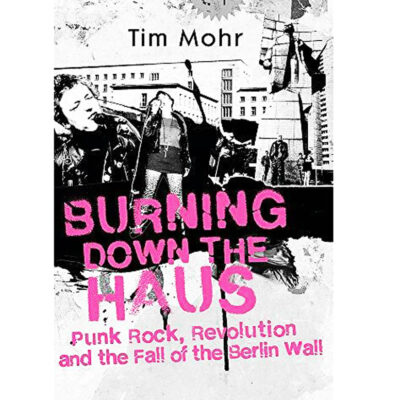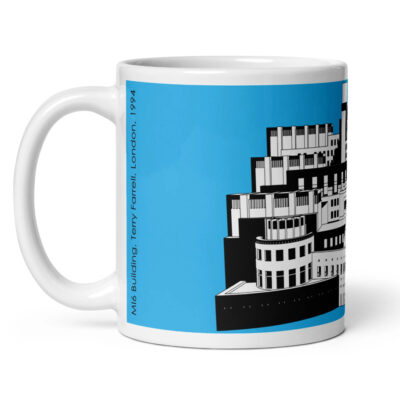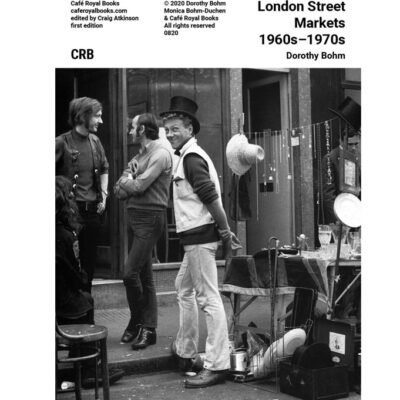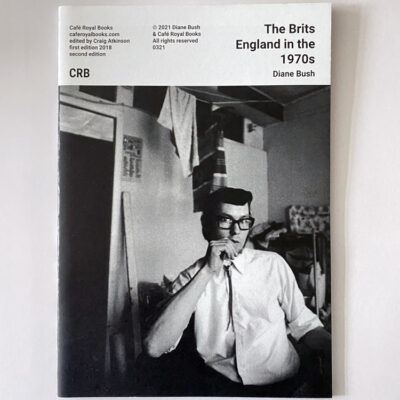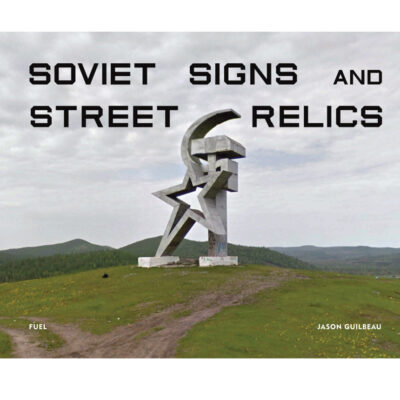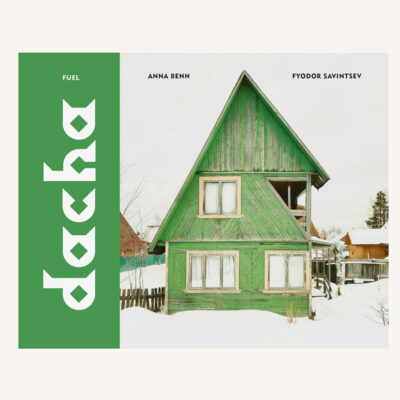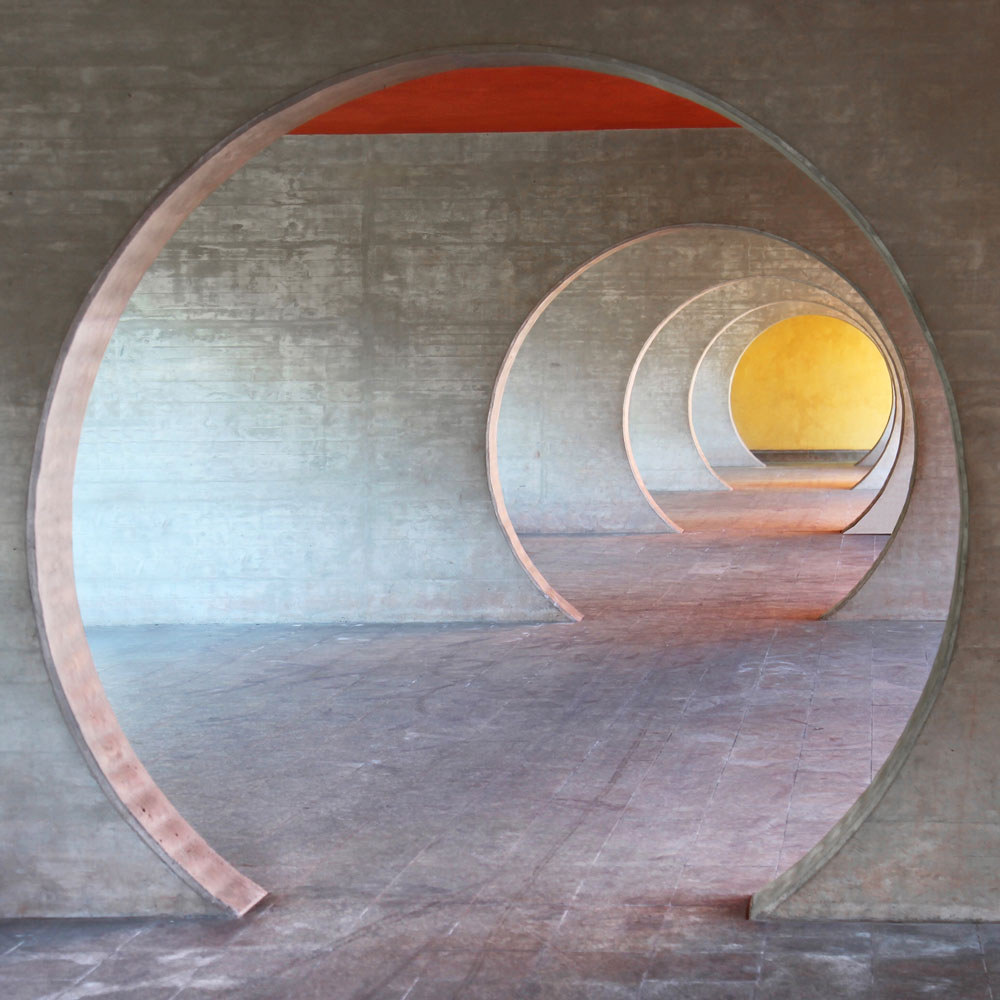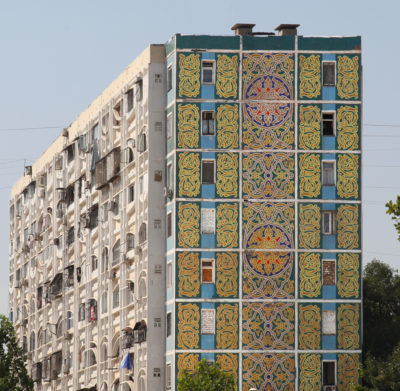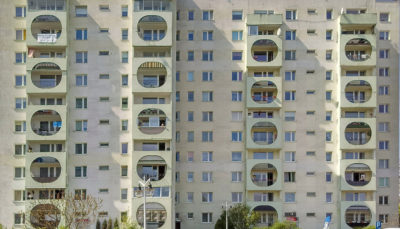THE FADING REMINDERS OF SOVIET MODERNISM IN CENTRAL ASIA
Landing in Dushanbe, Tajikistan in the middle of the night, exhausted by the long trip from Switzerland, Nathan Lopez challenges us to follow in his footsteps
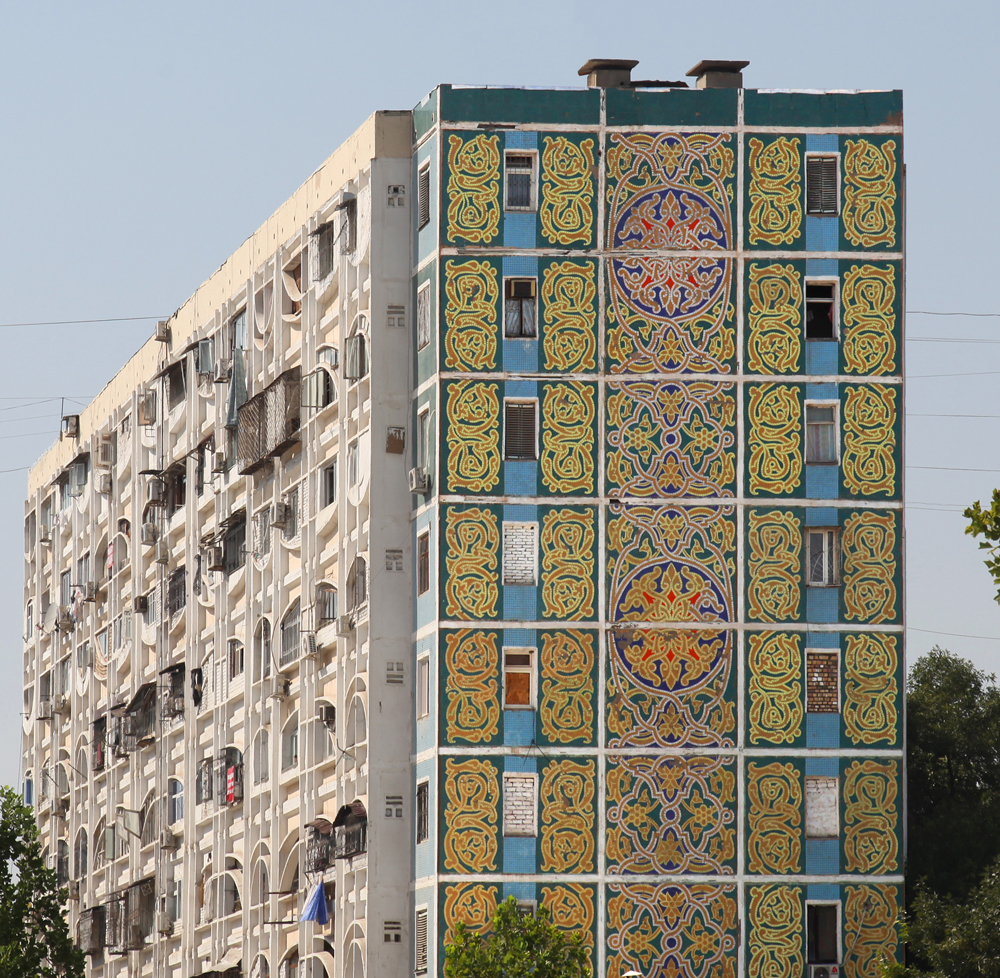
Tashkent
‘Curious about discovering a region I didn’t know much about aside from vague knowledge of the Silk Road. A matter of hours later I visited the ‘city centre’, renovated and still undergoing construction. I purposely did not organise too much in advance to get that real sense of travelling spontaneously’.
‘As I was walked away from the centre of town, I took in my surroundings, an abandoned cable car, distinctively shaped windows, balconies and facades.
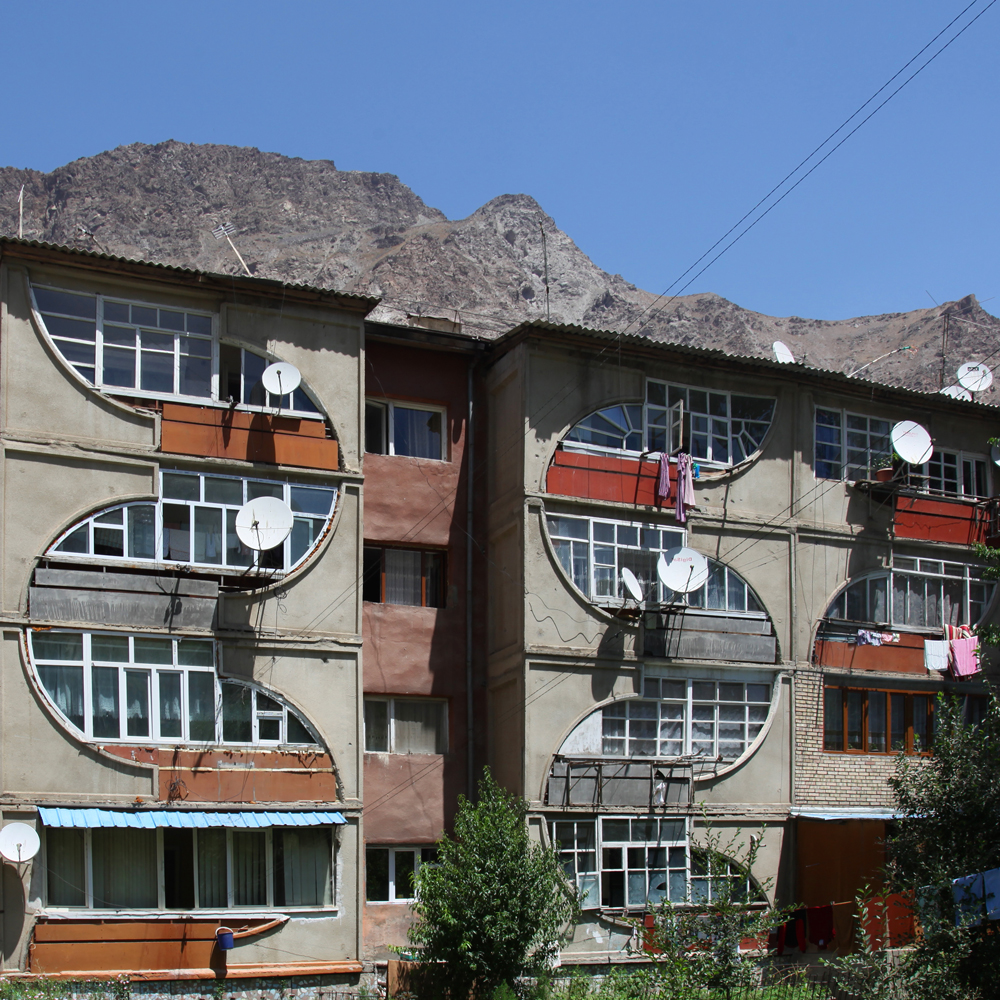
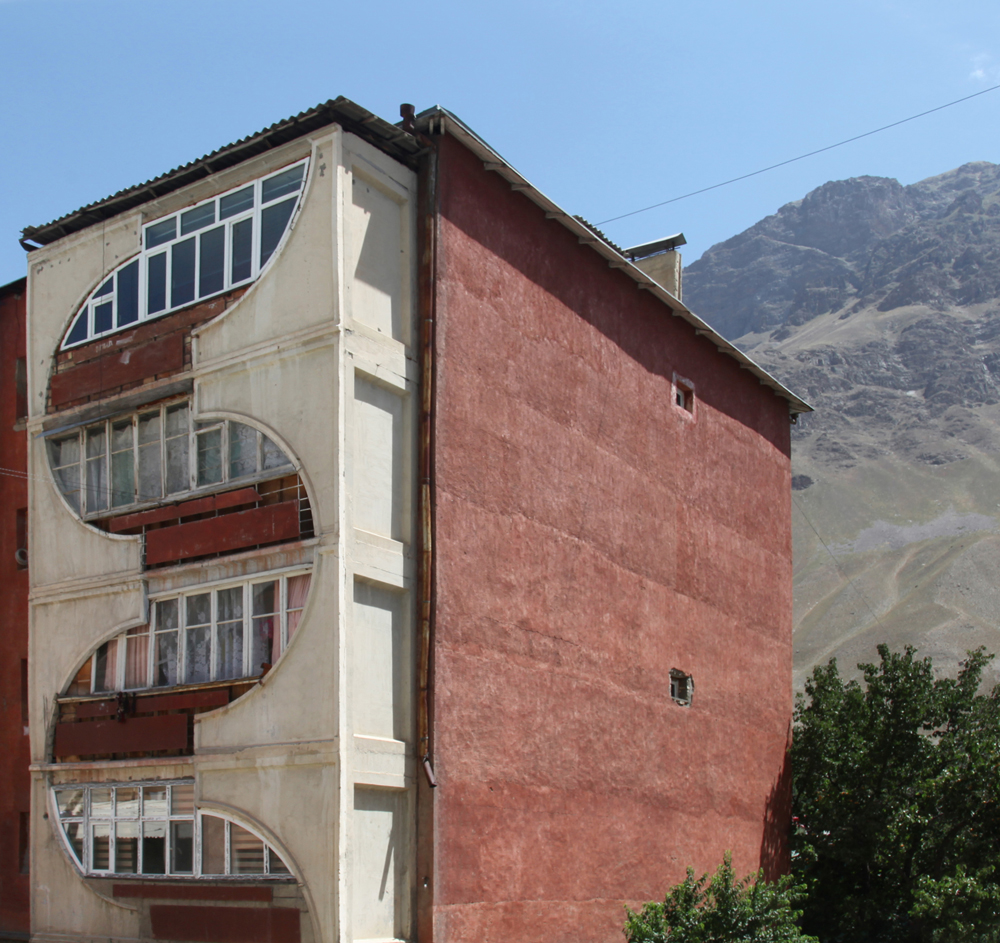
Khorog Tajikistan
A graphic designer by training, the modernist buildings decorated with geometric patterns jumped out. A wonderful assault on the eyes. Spotting them became like a game for me and I spent most of the time just exploring, discovering new buildings and patterns throughout the city landscape.
‘A wonderful assault on the eyes’
I tried to imagine what these buildings might have looked like originally. Most dated back to the ’60s, ’70s and ’80s. In order to construct them, entire neighbourhoods were probably erased. There isn’t much evidence of older forms of architecture.
In terms of colour, the Pamir mountains (especially the Wakhan corridor) will give you a mix of yellow sand, red mountains, green fields and white snowy peaks… a delight!
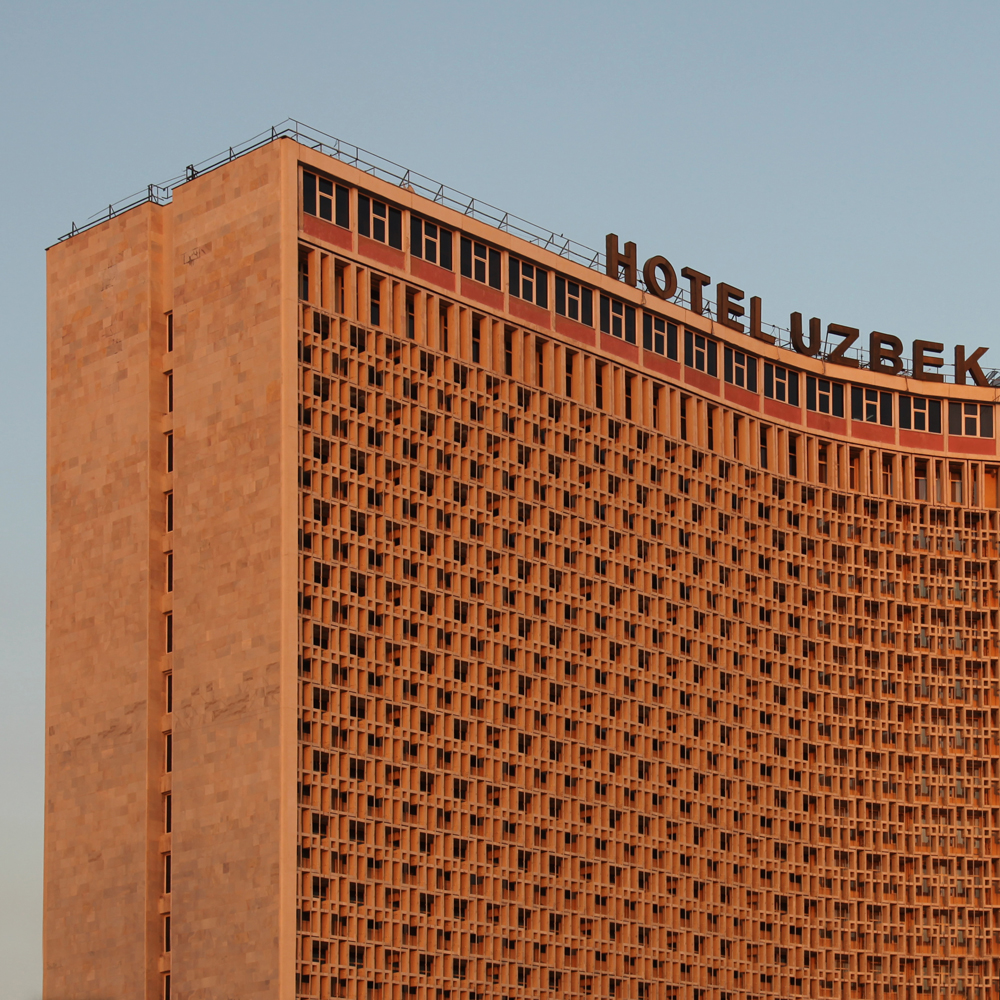
Hotel Uzbekistan
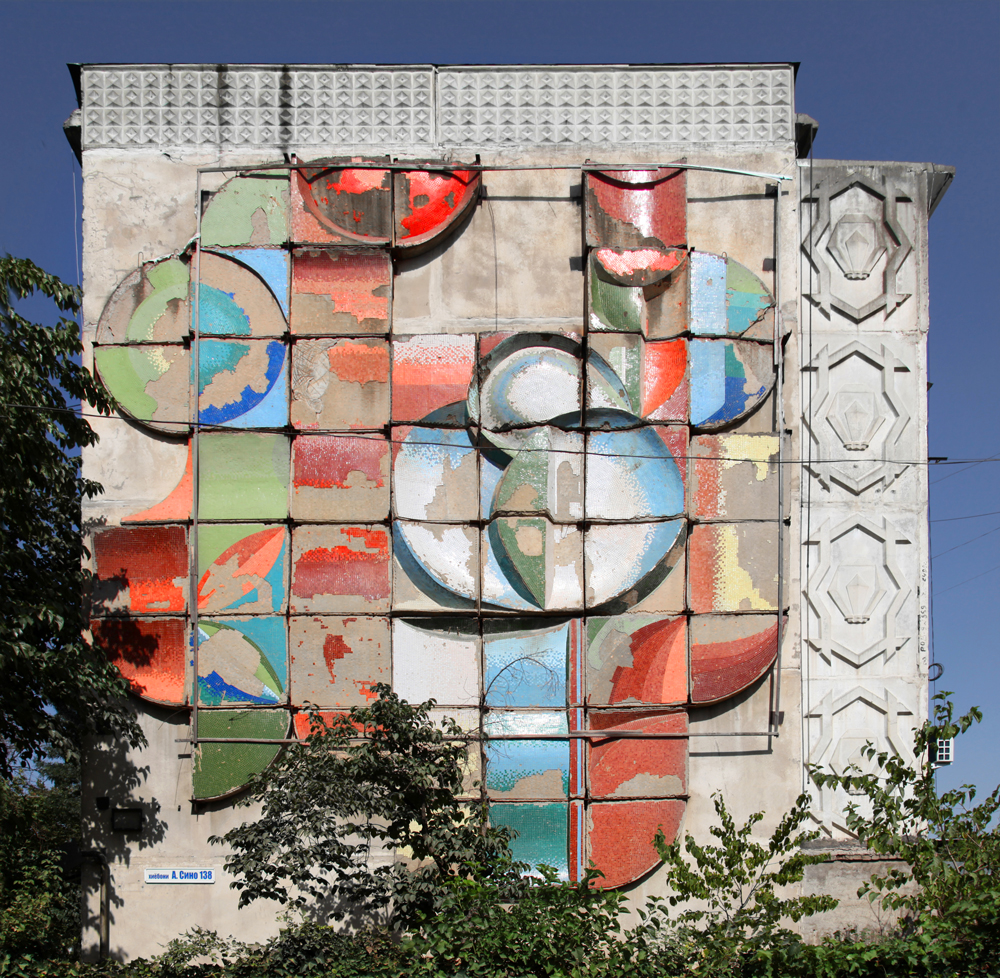
Dushanbe
A hundred years ago, Dushanbe was simply a small market. The name means “Monday” in Tajik, which is the day the market used to take place. The evidence of Soviet influence definitely gets stronger as one leaves the centre of town. Discovering the suburbs feels like time-travelling. It is quite clear that Dushanbe is being reimagined. Many of the buildings I’ve seen might soon disappear, forever’.
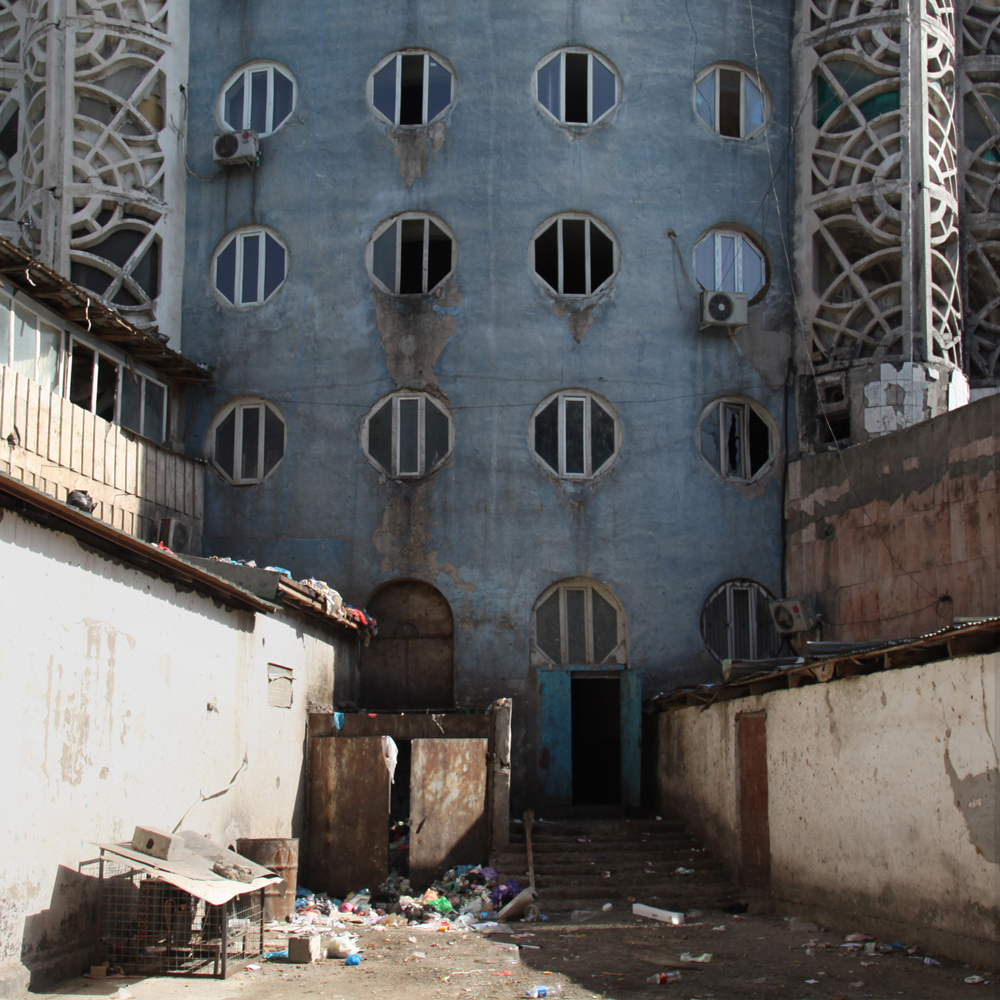
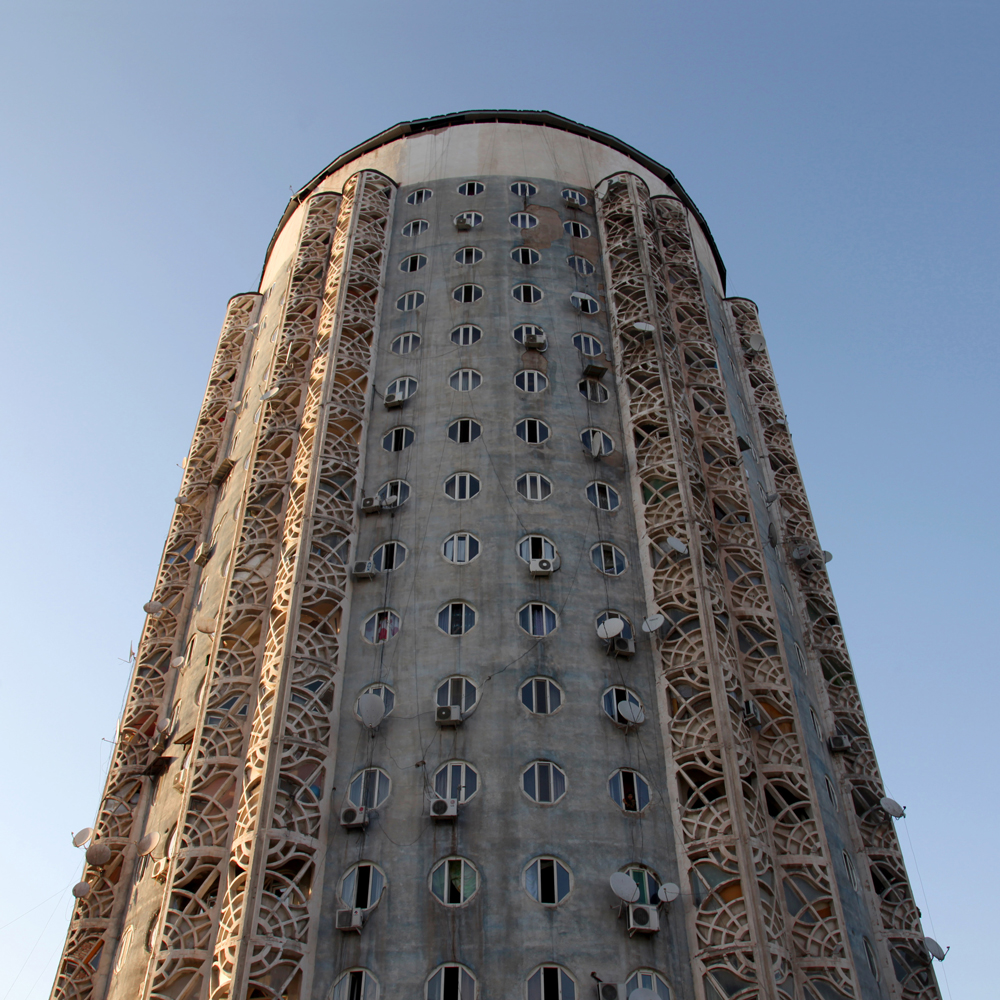
Dushanbe
My round trip continued on to Khorog and the Wakhan Corridor, then back to Dushanbe, onwards to Khujand and finally finishing up three weeks later in Tashkent, the capital of Uzbekistan. My mode of transport? I restricted myself to shared car rides, frequently finding myself, accompanied by families, with my bags and their watermelons resting precariously on our knees’. There are still plenty of Soviet trucks in evidence as well as colourful cars.
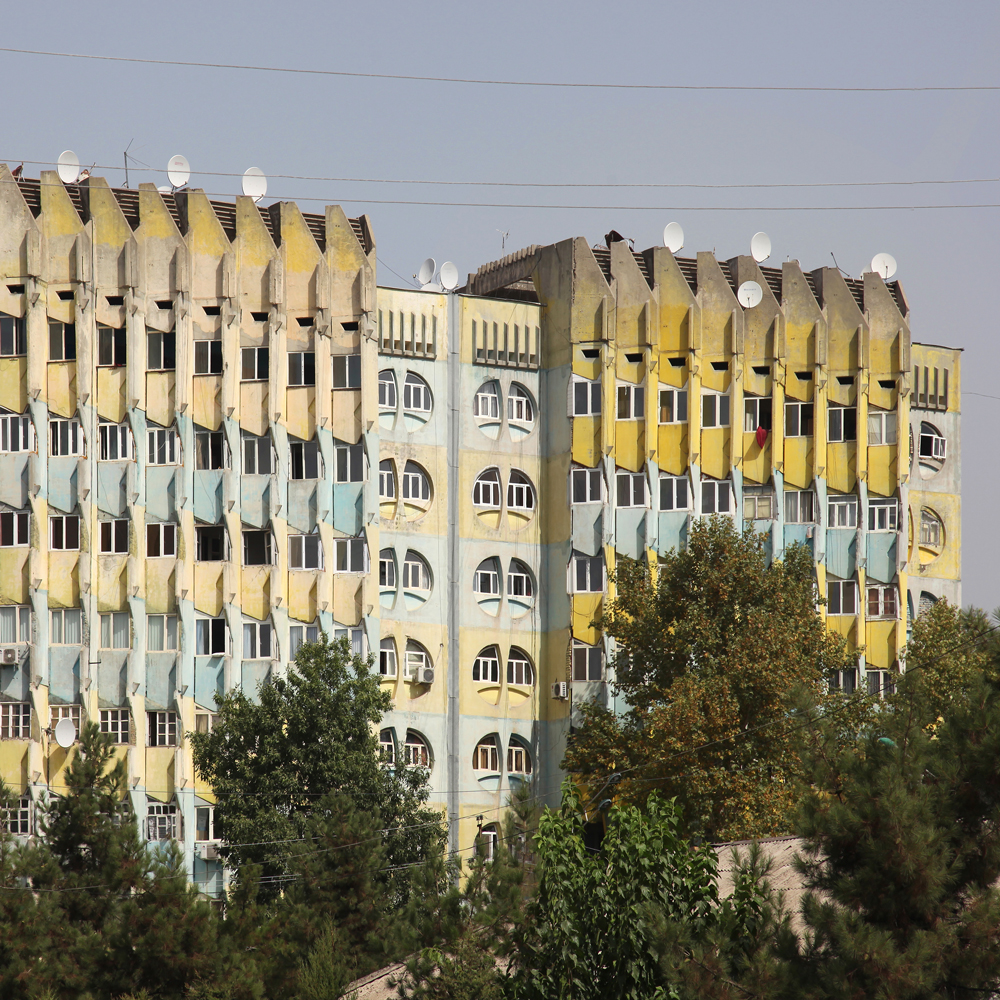
Vahdat Tajikistan
You have to be ready for the poor quality of roads once you get outside central areas. Sometimes totally unpaved, which made journeys slow and shaky. The upside? Time, time to meet people, time to hear their stories. In the most remote places, people would be very nostalgic about the Soviet Union. For some, the perception when the state collapsed, was that what disappeared with it was support for people living in isolated places and extreme climatic conditions. Khorog, for example, has an airport has not been operational since the end of the Soviet Union.
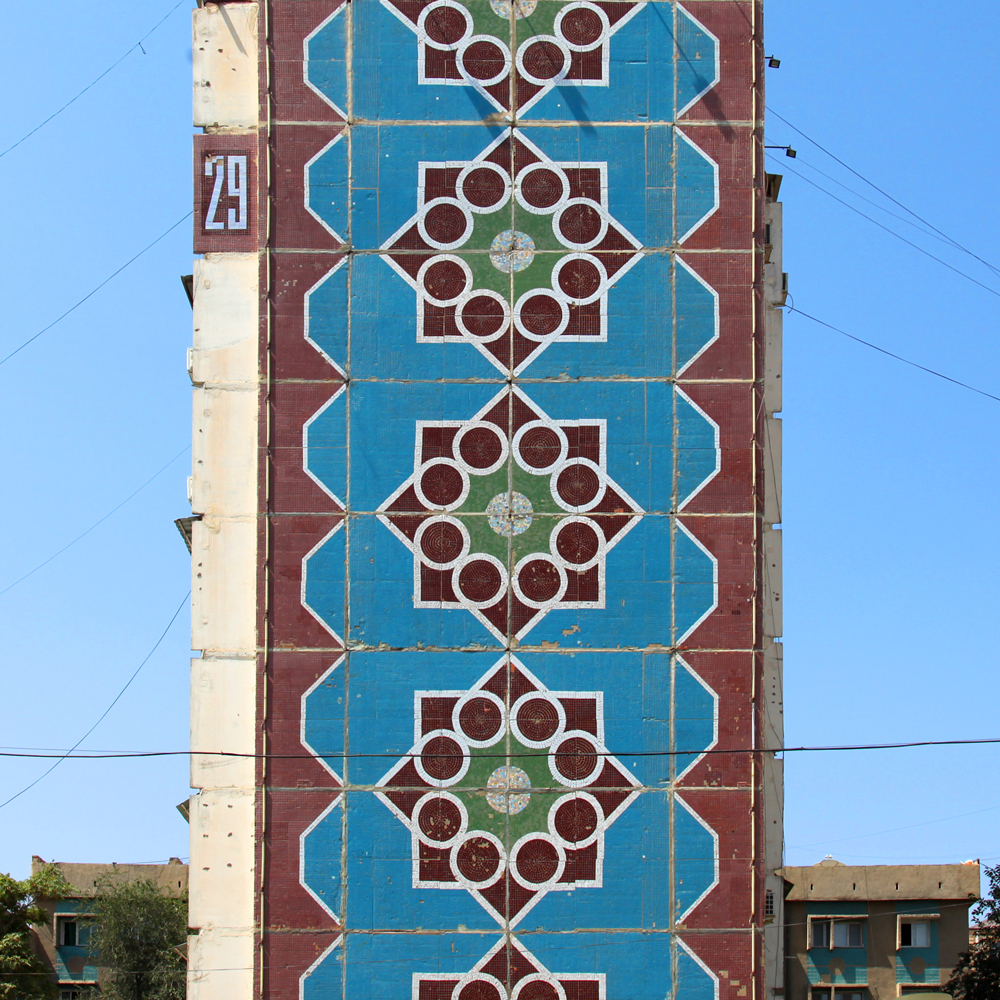
Khujand Tajikistan
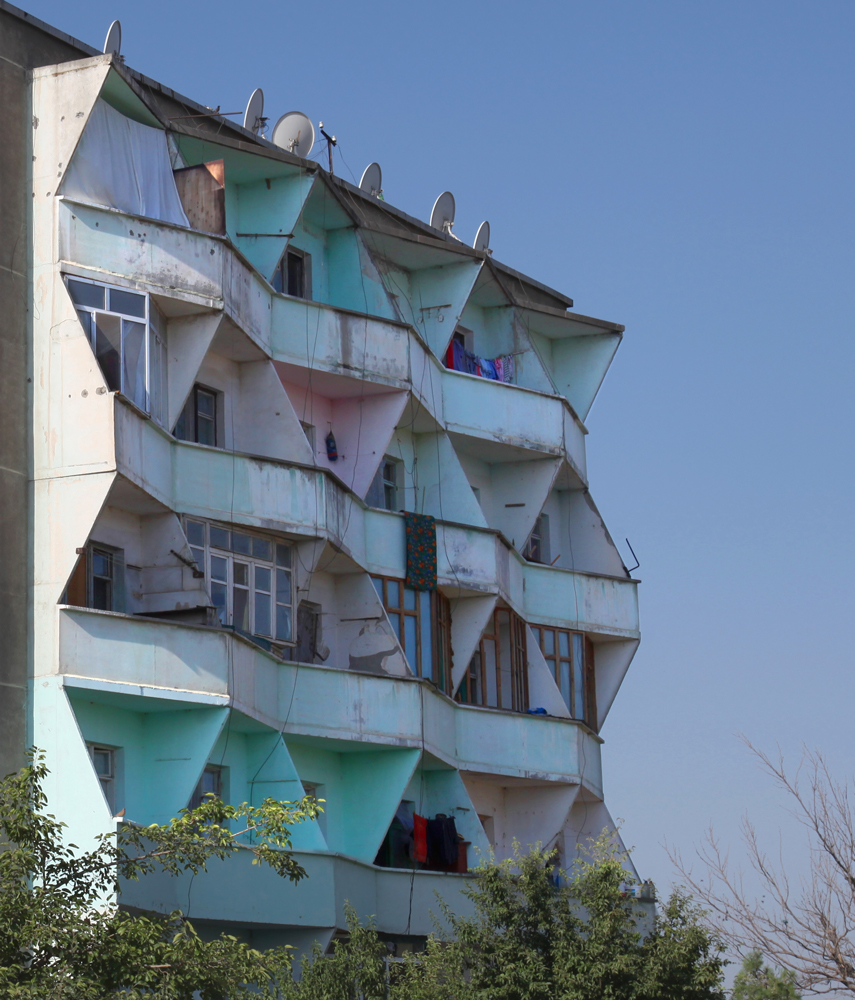
Chkalovsk Tajikistan
Across the regions, the Modernist apartment blocks simply looked like canvases, the streets overflowing with works of art. Each covered with curves, triangles, ellipses and geometrical motifs. You have to use your imagination as too many of the buildings are hard to see properly, covered with electric wires, parabolic antennas and there’s always a carpet hanging over a balcony here and there… this combination is charming.
‘At night, the cities are twinkling with the glow from coloured lights decorating newer buildings’
Tashkent is a particularly interesting place to visit as most of the city was destroyed by a massive earthquake in the ‘60s. It’s the country’s capital city and was entirely rebuilt capturing the essence of Soviet modernism. Its monuments, hotels and museums are particularly impressive and most of the apartment blocks have geometrical concrete motifs on their facades and stunning colourful mosaics on the side.
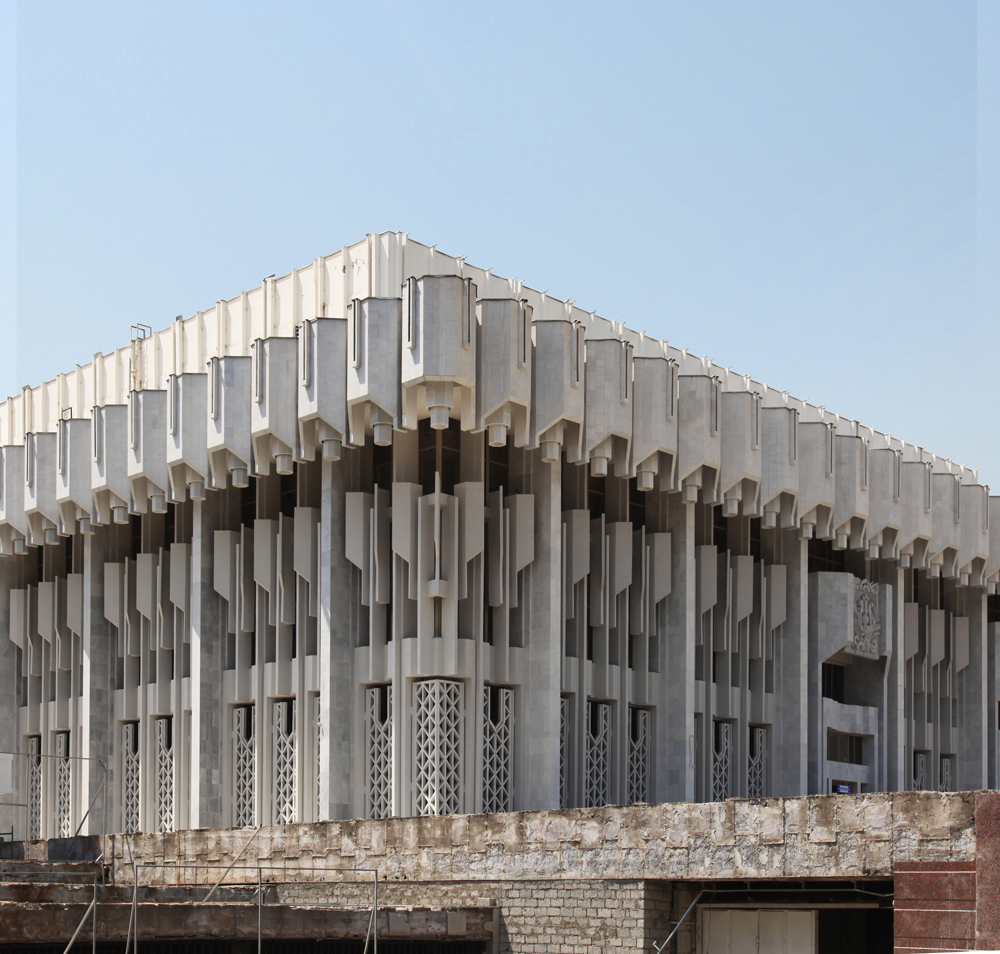
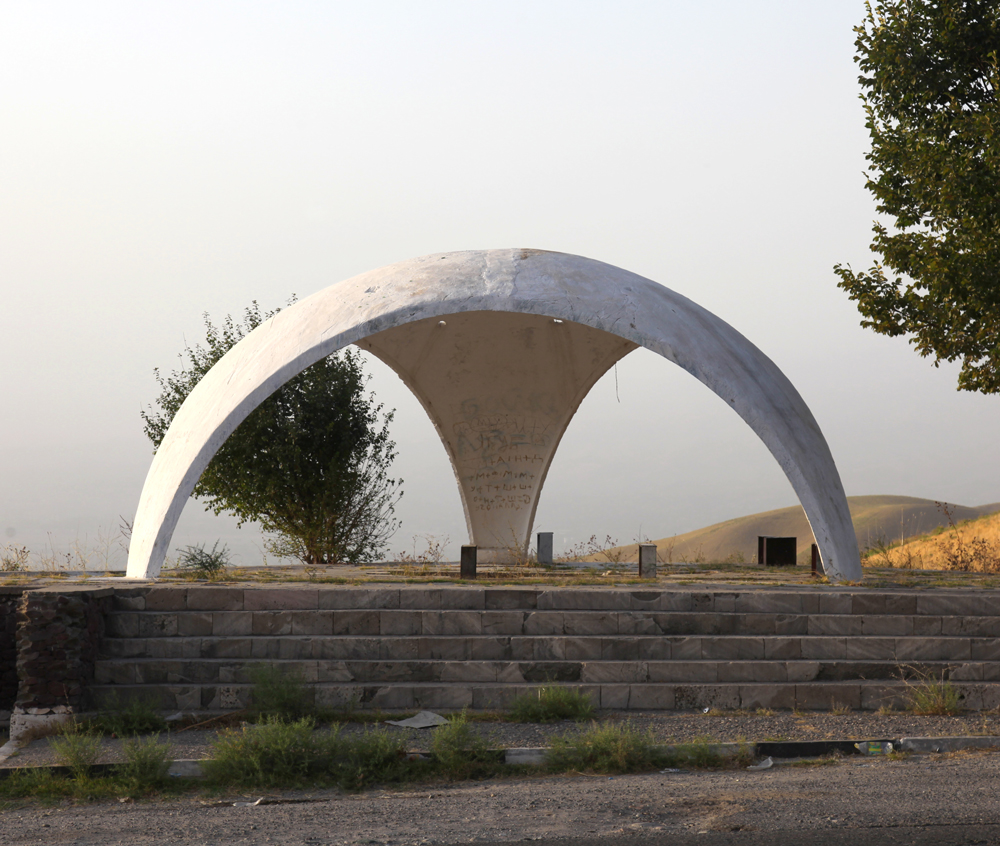
Dushanbe Bus stop
Intriguingly, the concrete patterns have evolved over the decades. Each occupant modifying and leaving their mark on geometric facades. Seems like it’s not so easy to deal with non-squares! People are so creative when it comes to covering an elliptical window, closing a balcony or turning a circle into a square…
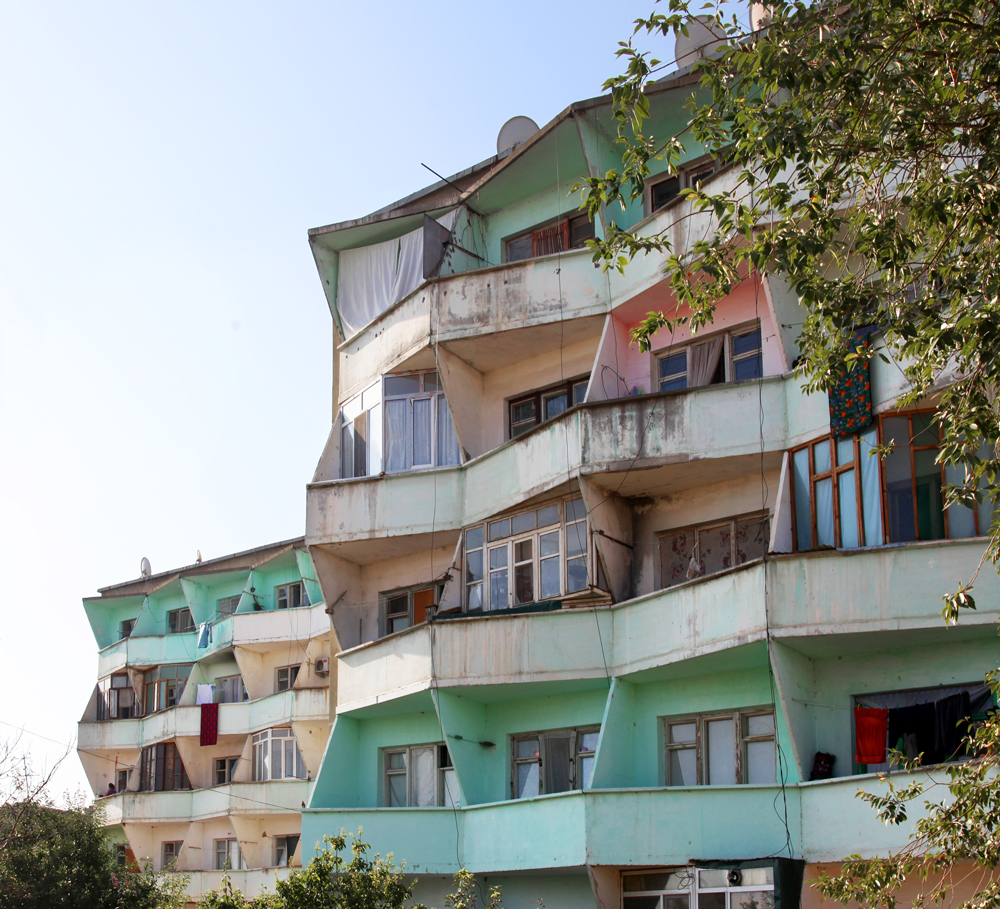
The beautiful ’S’ shaped windows in Khorog, Tajikistan, are particularly memorable. However, almost none are actually still intact. It was interesting to see how the modification of the windows has evolved over the years, slowly bringing square shapes to the initial curves. I spotted the same evolution in Dushanbe, large numbers of buildings with diamond-shaped windows, again, too few remained untouched.
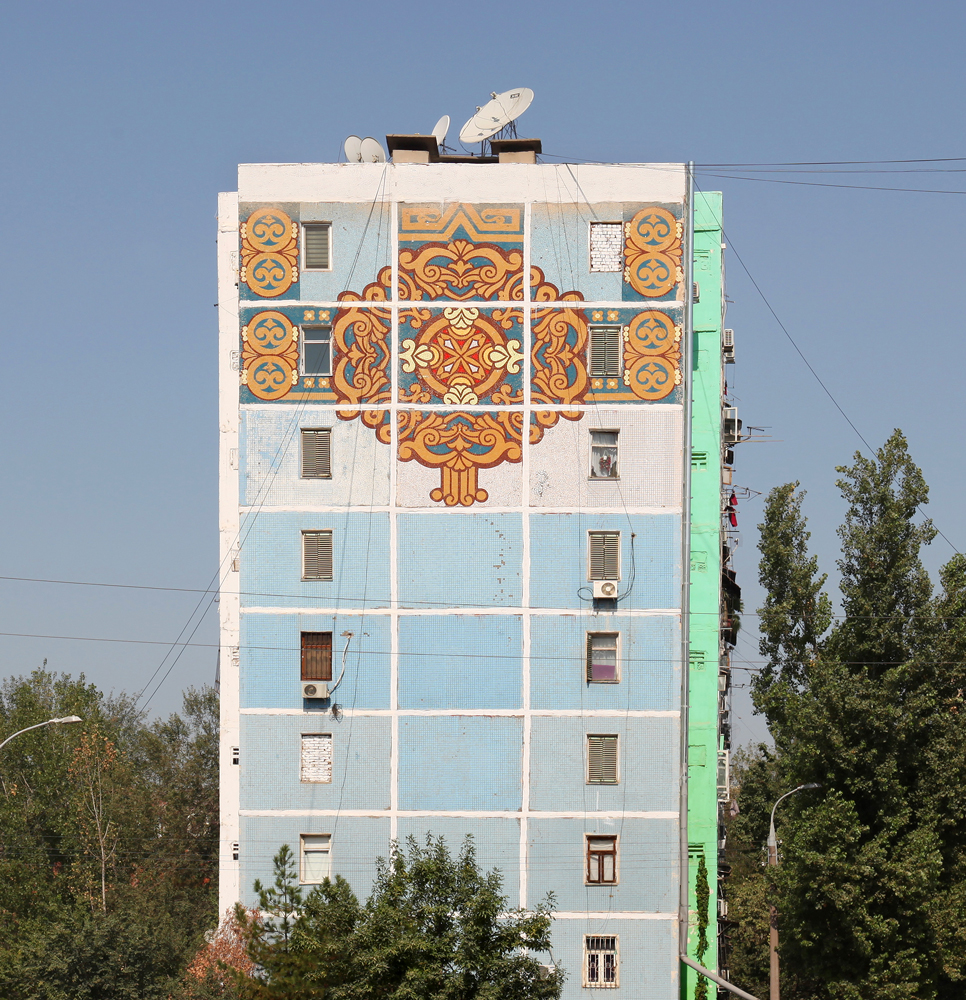
Tashkent
Today most of these buildings are in bad shape and many of the facades are slowly decaying. It gives them a curious charm with a tinge of regret. How much longer they will be evident is anyone’s guess. They are being erased from the city landscape and many of Tashkent’s geometrical mosaics are now hidden behind giant advertising hoardings.
The architectural history is composed of layers, decorative, Soviet and beyond
Returning to Switzerland I realize these photos represent a testimony to Central Asia’s Soviet heritage, and a chance to record them with my own lens before they disappear forever.
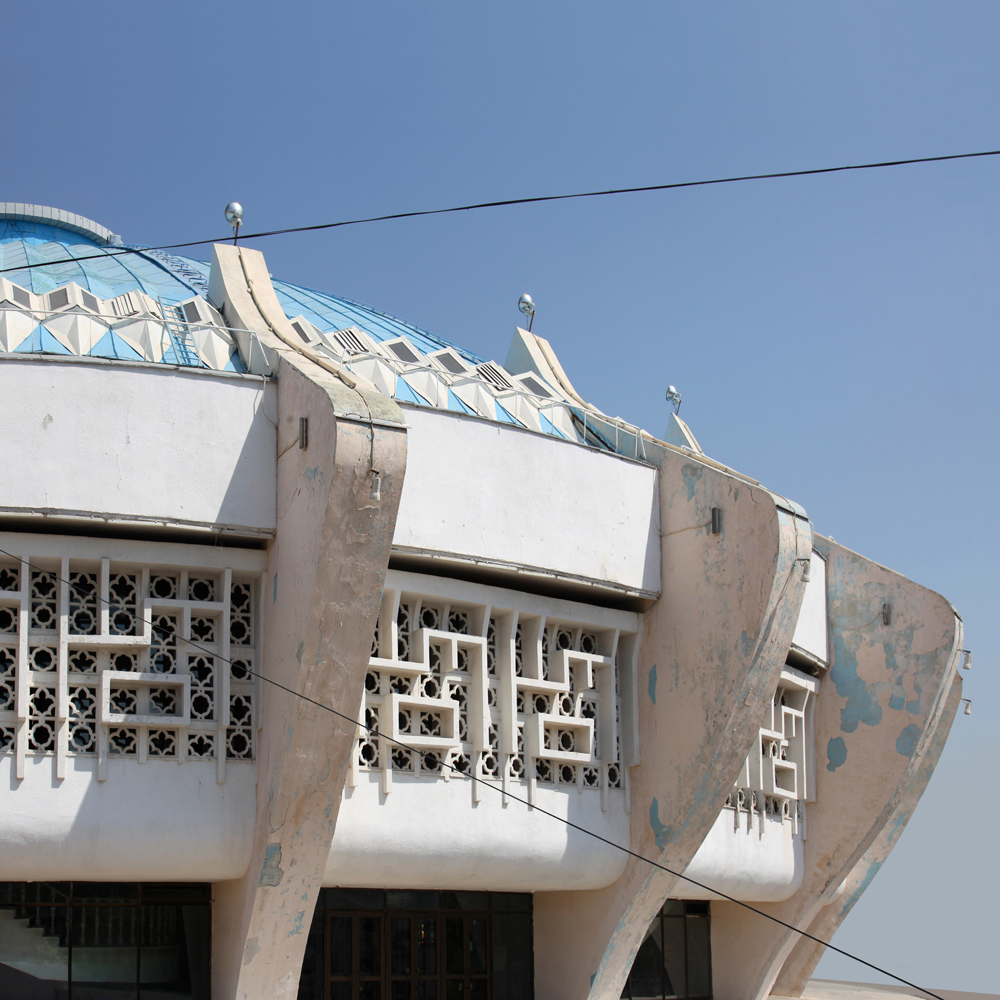
Tashkent
Travel hacks from Nathan:
Getting to the Pamir mountains can take longer than you expect. The roads are long and not in good shape or are being repaired causing delays.
If you are planning a city to city trip, such as Dushanbe – Khujand, Tashkent, the roads are in better shape and the landscape beautiful. To cover more ground it works to mix in air travel. There is a direct flight from Dushanbe to Tashkent.
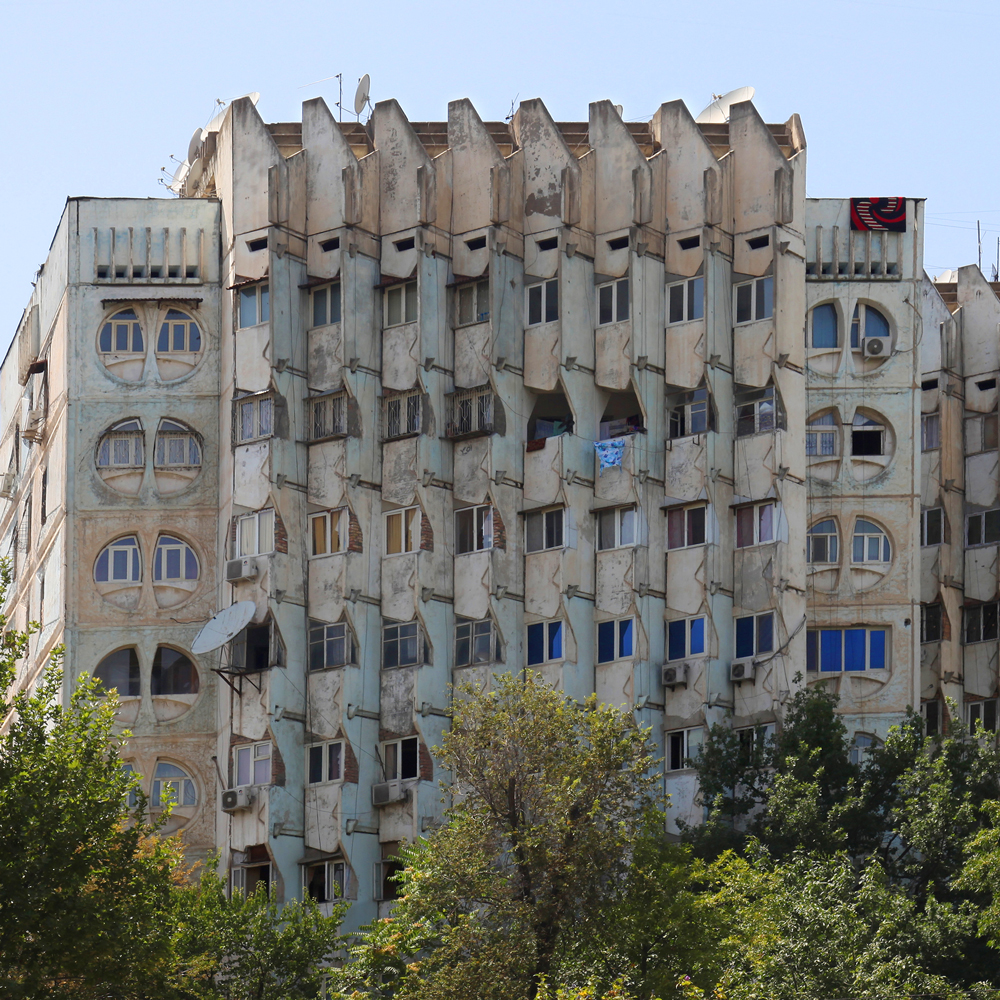
Dushanbe
Pack wisely. Summers can be extremely hot (It was around 40 degrees when I was in Dushanbe and Tashkent).
Always carry enough water with you
Protect your camera
Make sure your camera is well isolated from shocks, the roads can be extremely uneven, and travel can at times be very shaky.
Keep your camera equipment with you at all times. Always refuse to put you bag in the trunk or on the roof of the car. I found out the hard way as my camera actually broke because of that… Luckily, I managed to get it repaired once I got back into the city.
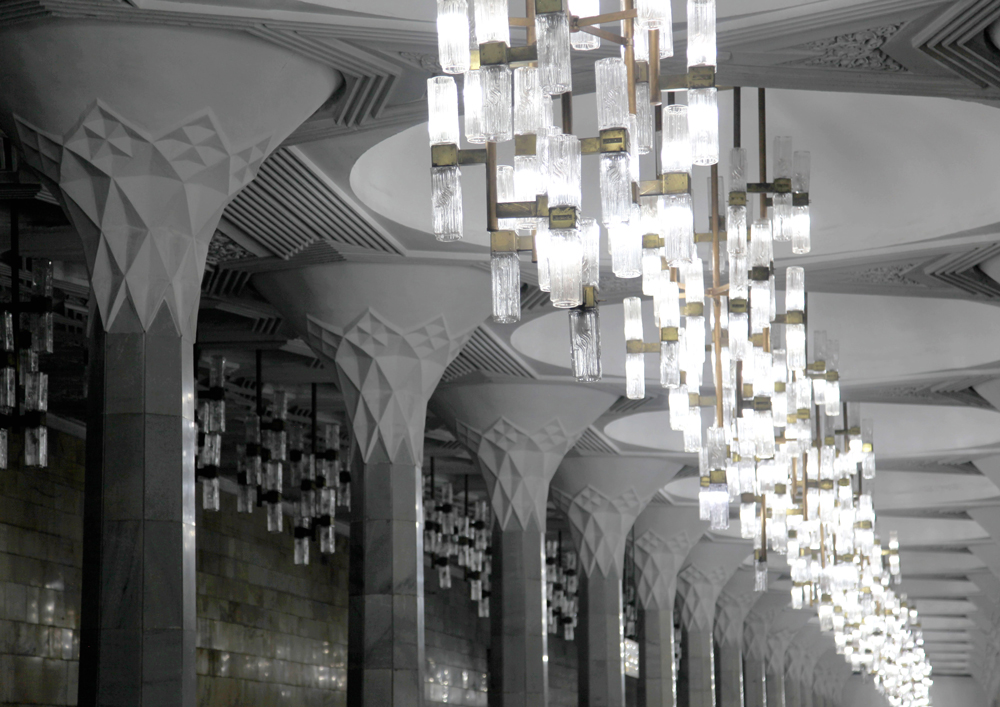
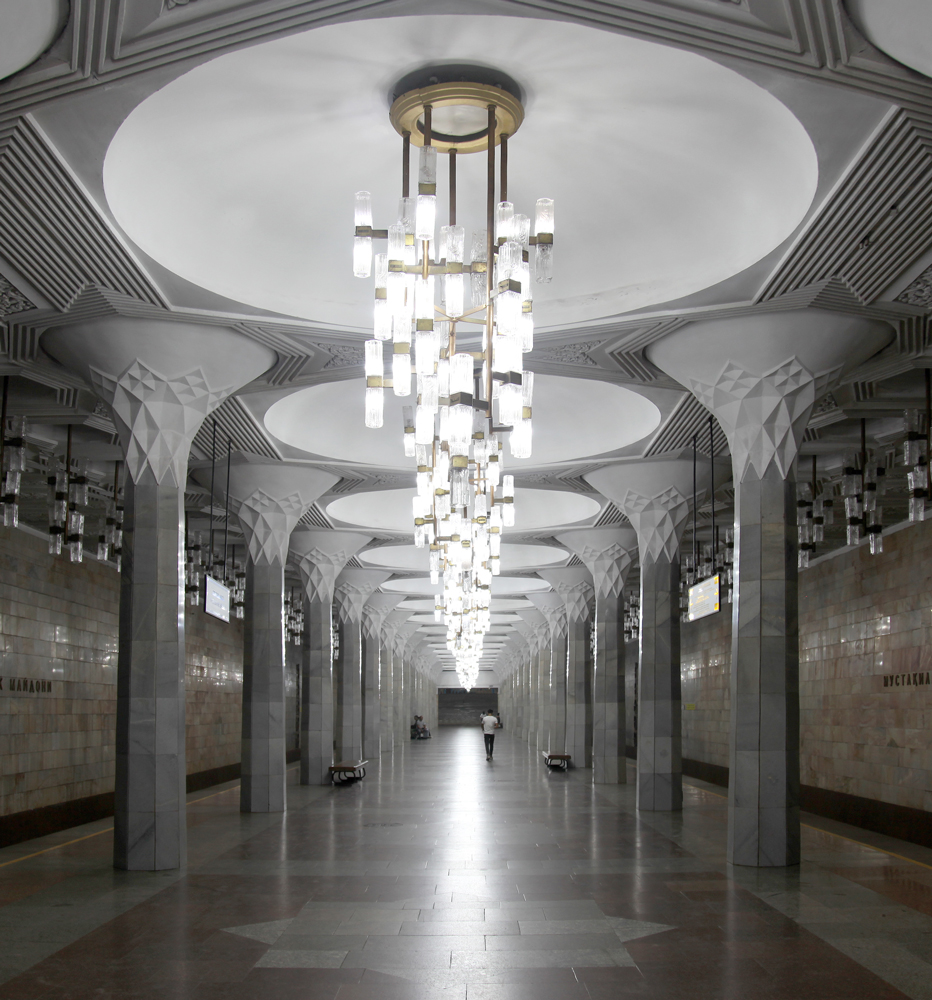
Tashkent Metro
If you are not travelling solo, I’d recommend renting your own car. Bearing in mind the condition of the roads, I met quite a lot of groups, couples and even solo travellers exploring on their own. Not the best option if you are on a budget but it enables you to stop everywhere. There are so many, buildings, monuments or landscapes I noticed from the window without any possibility to stop. It can be really frustrating!
The border crossing between Tajikistan and Uzbekistan is changeable (so check travel advisories) – sometimes a visa is required and a precise itinerary with hotel reservation confirmations other times it’s a simple 10-minute drive through the checkpoints
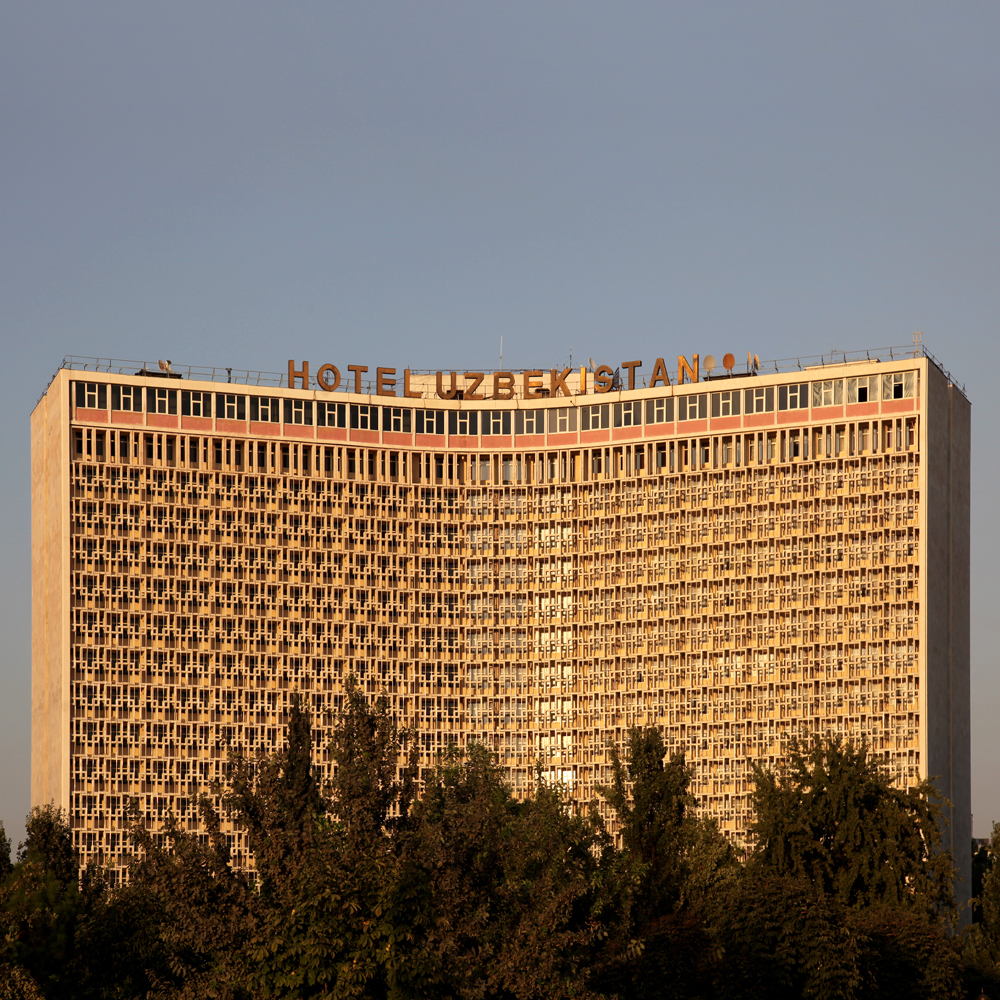
Hotel Uzbekistan Tashkent
In Tajikistan, an e-visa can be obtained online within two days It is a one-entry visa so if you cross the border, you will just have to order another one if you are coming back to Tajikistan (at time of writing)
‘There’s a lot of fried mutton’
Foodwise, you won’t have that many options and it’s a lot about fried mutton (most of the time in soups or with rice) all over Central Asia. Vegetarians might have a hard time there;) There are salads but make sure its components have been peeled and only drink water from closed bottles. In Tashkent, the situation is completely different, and you can find food from all over the world.
There are very few cars in such remote places and it is more common to see people travelling and/or carrying stuff on a donkey.
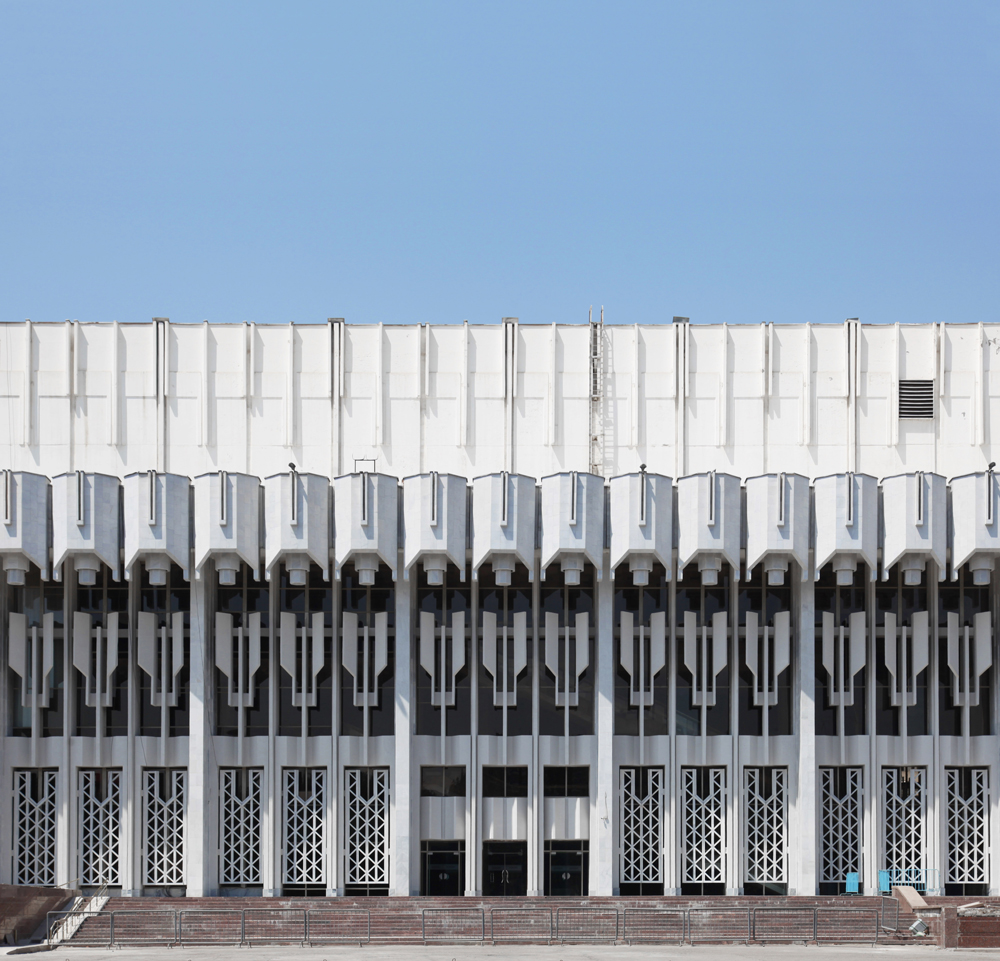
Tashkent Facade
There is no Wi-Fi, connection or regular public transportation in remote areas outside of cities. Think of it as an ideal destination to combine with a digital detox:)
In the hottest hours of the day, it is worth spending an hour or two in Tashkent’s metro. The colourful stations are simply amazing!
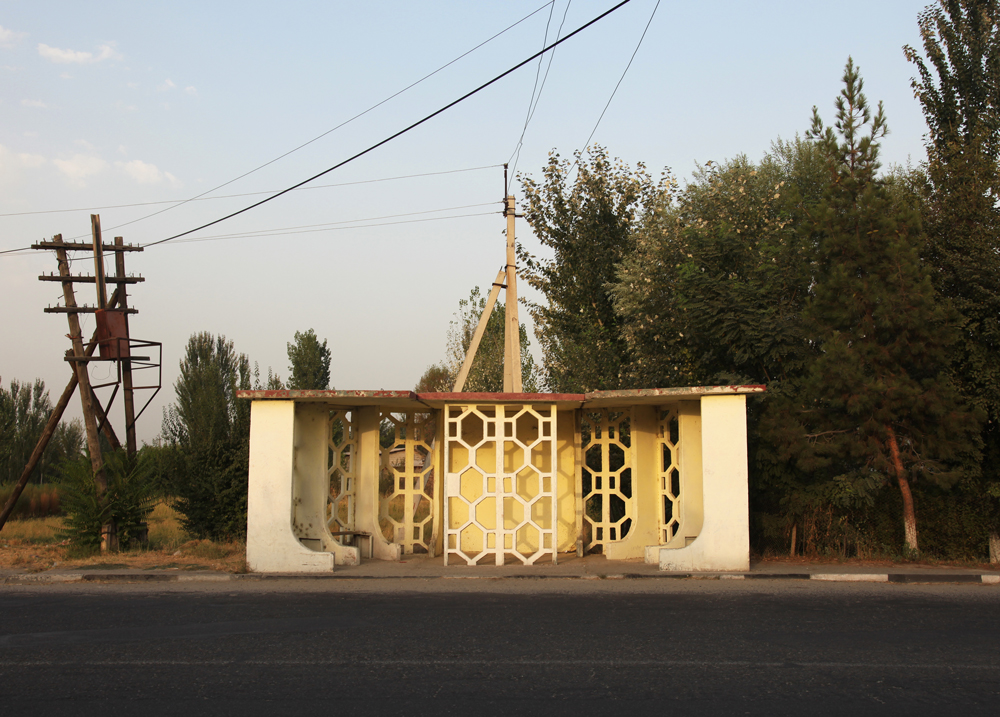
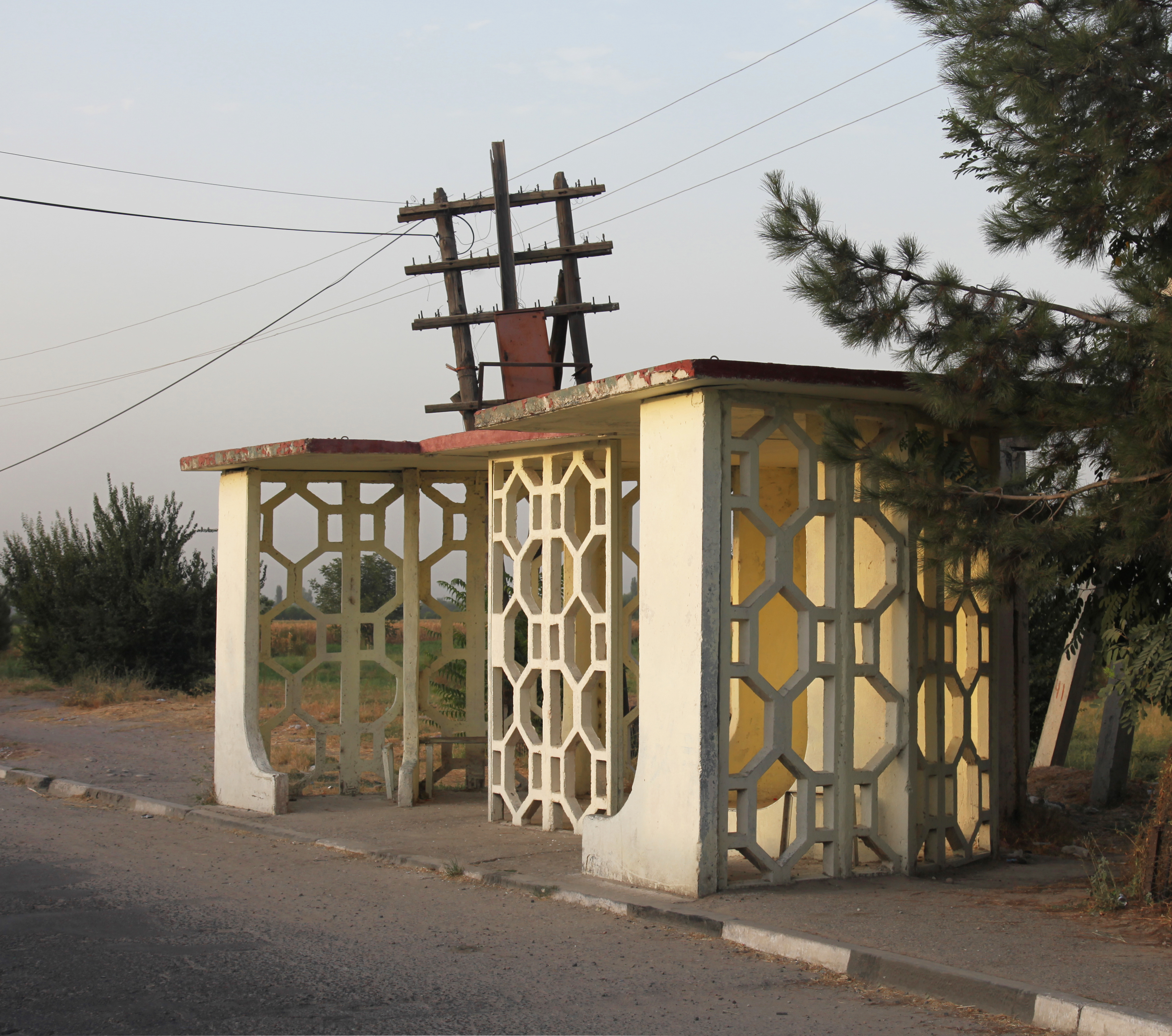
Dushanbe
At sunset, go to Amir Temur Square in Tashkent to watch the white facade of Hotel Uzbekistan turn to orange. It is wonderful.
Check out the modernist apartment blocks in Dushanbe painted in pastel green, blue or pink. Round the day off by walking from the ‘blue towers’ on Abuali Ibn Sino Avenue to Dushanbe’s Circus, it’s the perfect way to appreciate the architecture, colour and detailed mosaics in an authentic setting.
About Nathan:
“Originally from Switzerland, I live and work in Lausanne in Digital Education for a Swiss University where I develop animations and produce educational videos. A graphic designer by training, I graduated from the Lausanne University of Art and Design in 2014. In 2013, I had the opportunity to go for an exchange semester in Tel Aviv, where I actually started to practise photography on a regular basis and became more interested and familiar with the medium.
My fascination with architectural photography began in 2017, I’d spent time in Iran, Armenia, Georgia and Azerbaijan I particularly love to find forms of beauty in raw concrete, abandoned places or buildings that might mistakenly be written off as “ugly”. I discovered socialist and modernist architecture and now try actively seek these designs.
Typically I research ahead of taking a photo not simply to locate it also to understand its orientation to figure out what time of the day I’ll get the best light. It involves lots of checking out longitude and latitude on google map! I try hard not to plan too much to leave room for spontaneity.
As well as Central Asia, favourite destinations include Armenia, Poland, Iran, Lebanon, Montenegro and Bosnia. I actually consider Sarajevo top of the list!
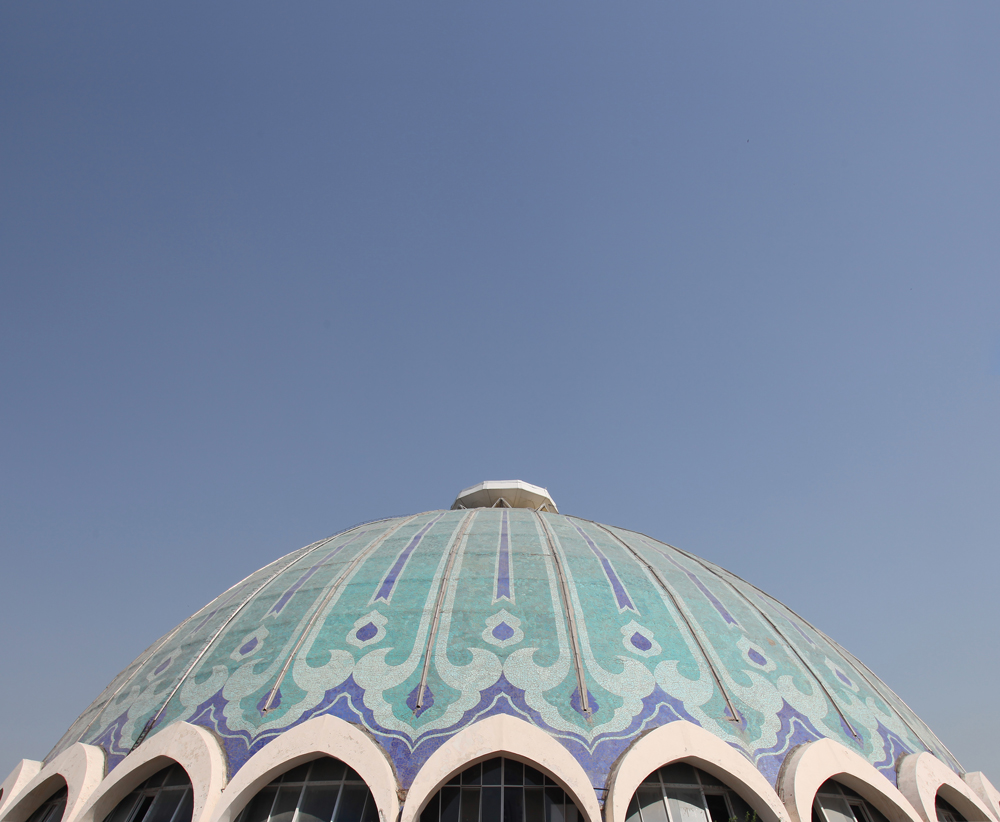
Tashkent
All images are Copyright of Nathan Lopez ©
Find Nathan on Instagram at www.instagram.com/__nathanlopez/




